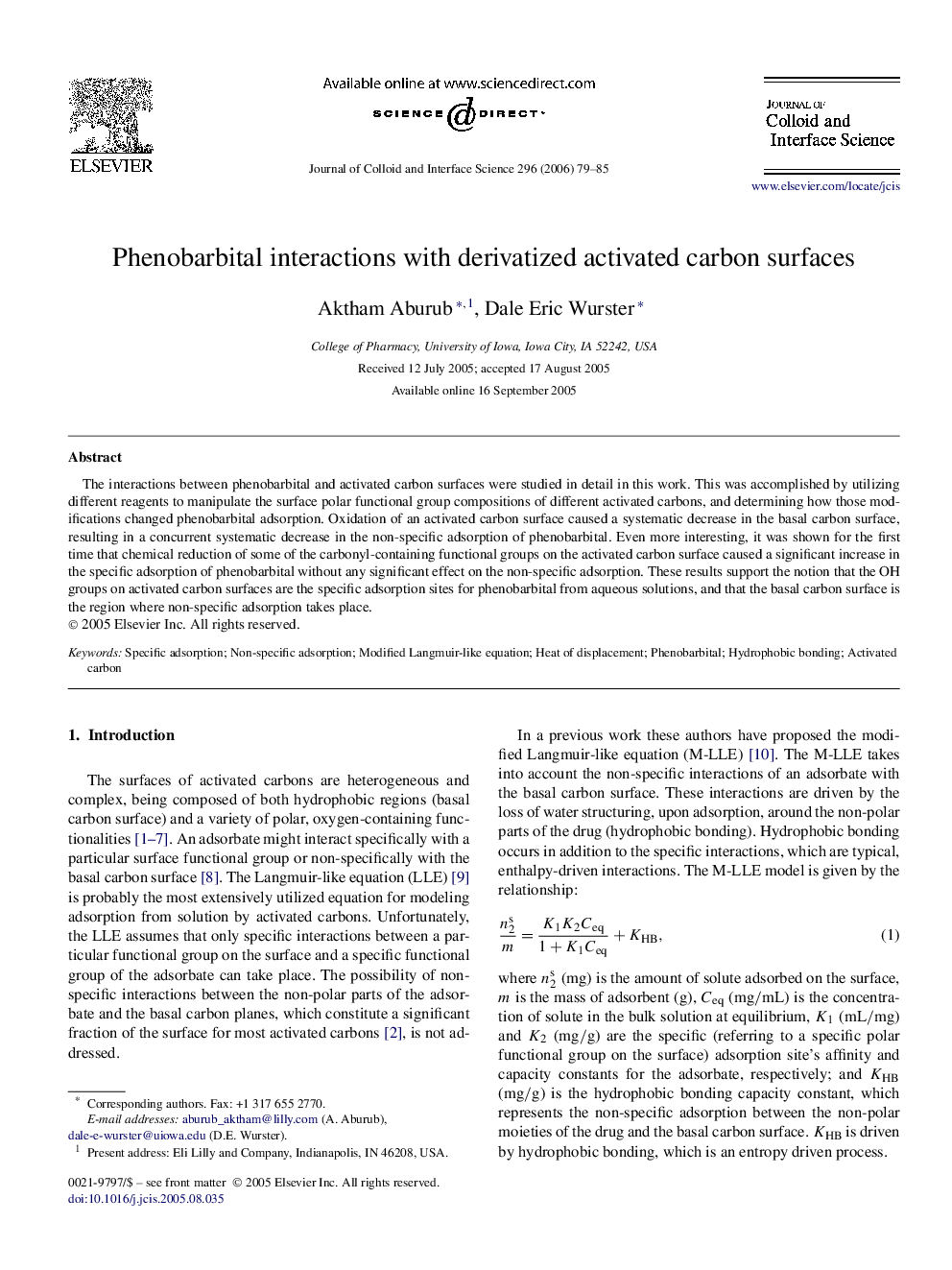| Article ID | Journal | Published Year | Pages | File Type |
|---|---|---|---|---|
| 613500 | Journal of Colloid and Interface Science | 2006 | 7 Pages |
Abstract
The interactions between phenobarbital and activated carbon surfaces were studied in detail in this work. This was accomplished by utilizing different reagents to manipulate the surface polar functional group compositions of different activated carbons, and determining how those modifications changed phenobarbital adsorption. Oxidation of an activated carbon surface caused a systematic decrease in the basal carbon surface, resulting in a concurrent systematic decrease in the non-specific adsorption of phenobarbital. Even more interesting, it was shown for the first time that chemical reduction of some of the carbonyl-containing functional groups on the activated carbon surface caused a significant increase in the specific adsorption of phenobarbital without any significant effect on the non-specific adsorption. These results support the notion that the OH groups on activated carbon surfaces are the specific adsorption sites for phenobarbital from aqueous solutions, and that the basal carbon surface is the region where non-specific adsorption takes place.
Related Topics
Physical Sciences and Engineering
Chemical Engineering
Colloid and Surface Chemistry
Authors
Aktham Aburub, Dale Eric Wurster,
